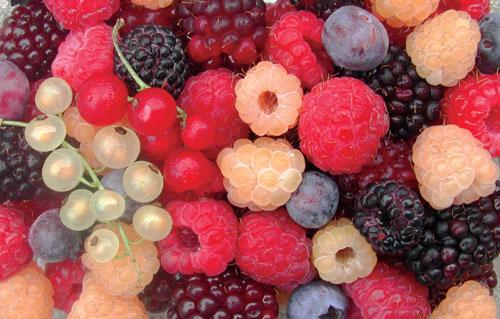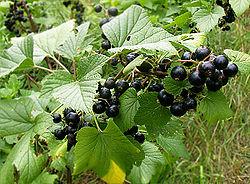
- •English
- •Удк 811
- •Unit 1 soil Active vocabulary
- •Text 1 What is soil?
- •1.3 Read and translate the text with the help of a dictionary.
- •1.6 Answer the following questions:
- •1.7 Read the text without a dictionary. Try to catch its main idea.
- •Text 2 Soil formation
- •2.4 Read and translate the text with the help of a dictionary.
- •Text 3 Soil Classification
- •3.3 Read the following pairs of words and translate them:
- •3.4 Read and translate the text with the help of a dictionary.
- •3.6 Render the text into Russian using no dictionary:
- •Text 4 Soil fertility
- •4.3 Read and translate the text with the help of dictionary.
- •4.5 Find the paragraph speaking about results of applying too much fertilizers. Discuss it.
- •4.6 Fill in the gaps using the words given below the text:
- •Unit 2 Fruit Active vocabulary
- •1.5 Answer the questions to the text.
- •Text 2 Apple
- •2.5 Read and translate the text with the help of a dictionary.
- •2.6 Answer the questions to the text.
- •2.7 Read the text without a dictionary. Try to catch the main idea. Apple cultivars
- •Text 3 Pear
- •3.7 Match the words with the definitions:
- •Text 4 Cherry
- •4.3 Find all the international words in the text and translate them into Russian.
- •4.4 Read and translate the text with the help of a dictionary.
- •4.5 Say if these statements are false or true:
- •5.5 Say if the statements are false or true:
- •5.6 Match the words with the definitions:
- •Unit 3 Berry
- •Active vocabulary
- •1.5 Answer the questions to the text.
- •1.6 Find the synonyms for the following words:
- •1.7 Match the words with the definitions:
- •Text 2 Raspberry
- •2.2 Read the following words, paying attention to the pronunciation: delicious, species, primary, primocanes, frequently, immediately, attachment, preferable, injury, disease, permanent, refrigerate.
- •2.4 Read and translate the text with the help of a dictionary.
- •2.7 Read the text again and say if the statements are false or true:
- •Viticulture Active vocabulary
- •Viticulture Part 1
- •1.4 Translate the following words having the same stem. Check your translation with the help of a dictionary:
- •1.5 Read and translate the text with the help of a dictionary.
- •1.6 Answer the questions to the text.
- •1.7 Match the words with the definitions:
- •1.3 Find all the international words in the text and translate them into Russian.
- •1.4 Read and translate the text with the help of a dictionary.
- •1.5 Say if these statements are false or true:
5.5 Say if the statements are false or true:
Gooseberries require a very fertile soil.
Gooseberry bushes need the moist soil when the fruit is being formed.
At first you should pick the fruits on the outer edges of the bush.
Gooseberries ripen in mid-summer.
You should prune the bushes in autumn each year.
5.6 Match the words with the definitions:
-
Bush
a small animal or insect that destroys crops
Fertility
decaying leaves that are put on the soil to improve its quality to protect the roots of plants and to stop weeds growing
Mulch
the ability of the soil to produce good crops
Pest
to cut some of the branches of a tree or a bush to make it grow better
Prune
a low thick plant smaller than a tree and with a lot of thin branches
5.7 Form the degrees of comparison for the following adjectives: good, weak, bad, productive, little, dry, young, early, large, attractive, delicious, heavy.
Unit 3 Berry

Active vocabulary
-
to apply
применять, вносить
berry
ягода
branch
ветвь, ветка
bush
куст, кустарник
bloom
цветение, цветок, цвести
content
содержание
cultivar
сорт
deficiency
недостаток, нехватка
to dig
копать, рыть
flavor
вкус, аромат
insect
насекомое
leaf (leaves)
лист (листья)
loam soil
суглинистая почва
manure
навоз
to pick
собирать
to prune
обрезать, подстригать
ripe
спелый, зрелый
shoot
побег, росток
to support
поддерживать
wet
влажный
Text 1
BLACKCURRANT
1.1 Read the following international words and translate them: genus, aeration, produce, stimulate, neutral, equivalent, control, uniform, circulation, tolerant, pub, ingredient.
1.2 Read the following words, paying attention to the pronunciation: sawdust, purchase, nursery, patient, excessive, quart, susceptible, unusable, dietary, fungicides, culinary, source.
1.3 Translate the following word-combinations into Russian: organic matter content; water-holding capacity; soil structure; bare-root plants; air pockets; better air circulation; root growth; a light crop; soil test.
1.4 Read and translate the text with the help of a dictionary.
C urrants
are perennial bush fruits belonging to the genusRibes.
Their
relatively small plant size, ease of culture, and distinctive,
attractive fruit make them well suited for home gardens.
urrants
are perennial bush fruits belonging to the genusRibes.
Their
relatively small plant size, ease of culture, and distinctive,
attractive fruit make them well suited for home gardens.
Black currants are prized for their distinctive flavor in juice, jam, jelly, pies, and other desserts. They're also rich in Vitamin C. Red currants are used mainly for jelly or wine. White currants are not as popular as black or red currants.
Soils Currants tolerate a wide range of soil conditions, but they perform best in a well-drained loam soil with organic matter content greater than 1%. You can improve heavy clay and sandy soils by adding organic matter.
The average life span of currants is 10 to 15 years. So it's important to choose and prepare your site carefully. Eliminate all perennial weeds the year before you plant. Currants respond well to additions of organic matter, which improves aeration and drainage and increases water-holding capacity. You can also use compost, leaves, chopped hay or straw, peat moss, sawdust, etc. Take care to use only materials that are free of insects and weed seeds. Currants grow best in a slightly acidic to neutral pH (5.5 to 7.0). Test the soil pH the year before you plant and adjust it if necessary. If the pH is below 5.5, add lime as recommended by the soil test.
Planting Red currants are generally self-fertile, and you need only one cultivar for fruit production. However, they will produce larger fruit if you plant more than one cultivar and have cross-pollination. Some black currants are self-sterile and require a second cultivar for fruit production.
Plant healthy 1-to 2-year-old plants in early spring. Purchase bare-root or container-grown stock from a reputable nursery. Plant bare-root plants before they break dormancy (begin growth in the spring).
Space red currants 3 to 4 feet apart in rows. Black currants are more vigorous; space them 4 to 5 feet apart. Rows can be as close as 7 feet, but 8 to 10 feet allows for better air circulation in vigorous planting. Set plants about 2 inches deeper than they were growing in the nursery row or container. Firm the soil well to remove air pockets and water thoroughly after planting. At planting, prune all branches to a length of 4 to 6 inches. This stimulates new growth.
Strip off flower buds or blossoms that appear the year the plants are set, so that no crop is produced. Be patient! It's important that plants grow well the first year--flower and fruit production reduce shoot and root growth. Control weeds by shallow hoeing or cultivation. Mulching around the plants with sawdust or decomposed leaves is recommended: It conserves moisture, helps control weeds, and keeps the plant's roots cool.
A uniform and adequate water supply is needed from bloom time until the end of harvest. If rain doesn't provide this water, you need to irrigate. Be sure to water plants during prolonged dry spells, after harvest until late August or early September.
Harvesting The year after planting, you can harvest a light crop. By the third or fourth year, plants usually bear full crops. The berries on a currant bush ripen over a 2-week period. Once a berry ripens, however, it can usually be left on the bush a week or more without dropping or becoming overripe. Some people harvest the berries when they've reached full size, but before they're fully ripe. They prefer these slightly immature berries for jams and pies. Other people prefer fully mature or ripe berries--certainly, these are better if you eat them fresh!
Diseases Powdery mildew is the most common. Blackcurrants are especially susceptible to this fungus disease, characterized by a white powdery growth on young leaves and tips of new shoots in summer.
Culinary uses In the UK, blackcurrant cordial is often mixed with cider to make a drink called Cider & Black available at pubs. Adding a small amount of blackcurrant juice to Guinness is preferred by some to heighten the taste of the popular beer. In Russia, blackcurrant leaves are often used for flavoring tea.
